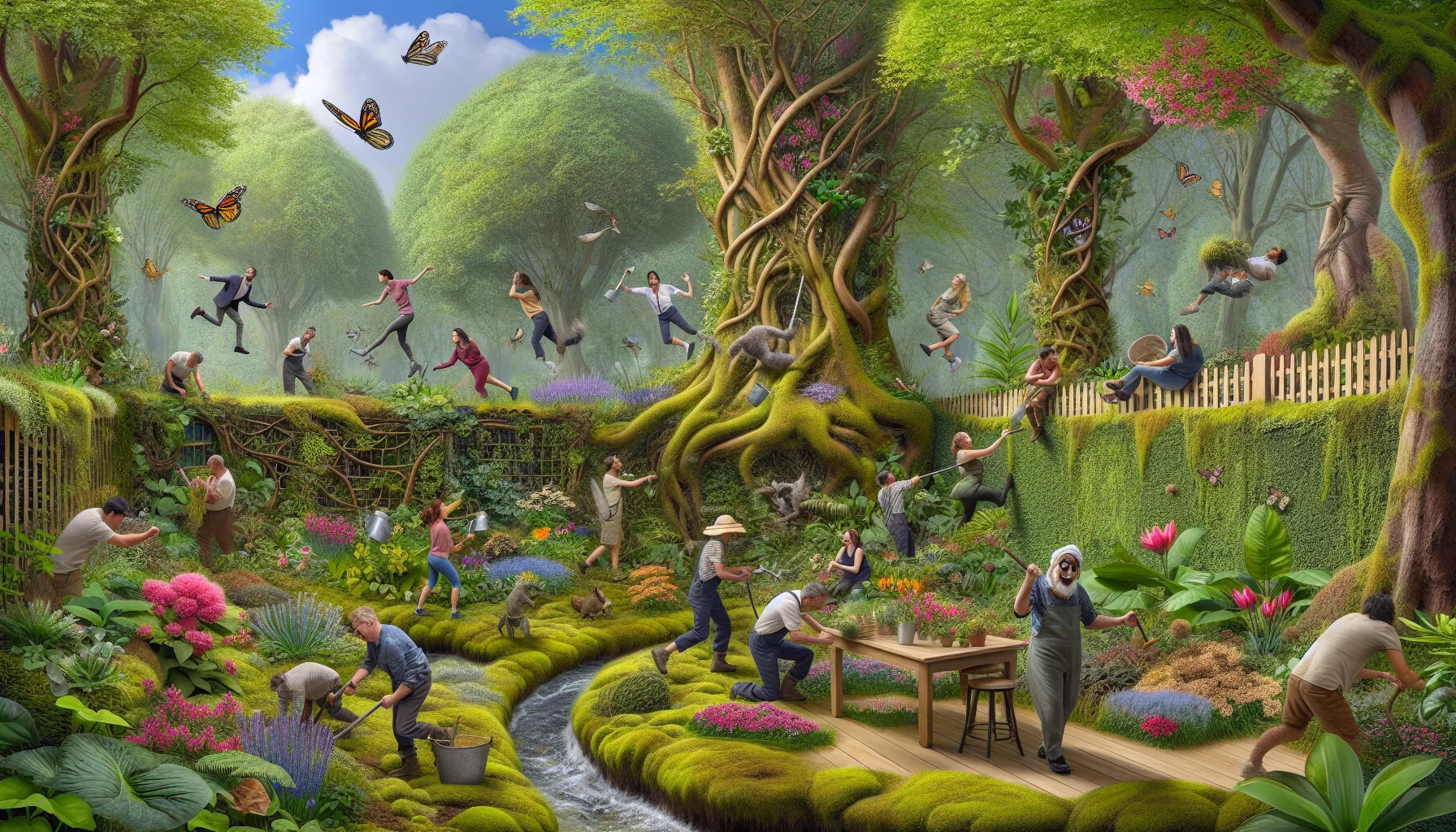Woodland garden design Quiz
Test Your Knowledge
Question of
Introduction to Woodland Garden Design
Woodland garden design is a unique approach to landscaping that seeks to mimic the natural beauty and structure of a forest setting. This design philosophy is centered around creating a serene and secluded garden space that features a variety of plants, trees, and shrubs commonly found in a woodland ecosystem. The appeal of woodland garden design to garden enthusiasts lies in its ability to create a tranquil and enchanting outdoor area that not only enhances the aesthetic appeal of a property but also provides a habitat for local wildlife. By incorporating elements such as native plants, shaded pathways, and natural water features, gardeners can create a lush, multi-layered landscape that invites exploration and relaxation.
Key Elements of Woodland Garden Design
- Shade-Tolerant Plants
- Layered Planting
- Natural Pathways
- Moisture-Loving Plants
- Diverse Tree Canopy
- Leaf Mulch and Organic Matter
- Native Shrubs and Understory Trees
- Water Features like Ponds or Streams
- Shade-Loving Ground Cover
- Wildlife Habitats for Birds and Insects
Choosing the Right Plants for Your Woodland Garden
| Common Name | Light Requirements | Soil Preferences |
|---|---|---|
| Ferns | Partial to Full Shade | Moist, Well-drained |
| Hostas | Partial Shade | Well-drained, Rich |
| Wild Ginger | Partial to Full Shade | Moist, Well-drained |
| Trillium | Partial to Full Shade | Moist, Well-drained, Rich |
| Bleeding Heart | Partial Shade | Moist, Well-drained |
| Jack-in-the-Pulpit | Partial to Full Shade | Moist, Rich |
| Woodland Phlox | Partial Shade | Moist, Well-drained |
Design Tips for Creating a Woodland Garden
Creating a woodland garden is a rewarding endeavor that brings the serene beauty and rich biodiversity of a forest into your own backyard. The key to a successful woodland garden is to mimic the natural landscape as closely as possible, creating a space that feels both wild and welcoming. Here are some practical tips for laying out your woodland garden to achieve an authentic woodland feel.
First, consider the structure of your garden. Start with the canopy layer by planting native trees that are common in your region's woodlands. Underneath, introduce smaller trees and shrubs to add depth and create a layered look that is characteristic of a natural forest. Remember to choose species that thrive in your local climate and soil conditions for a garden that grows and evolves over time.
Water features are a fantastic addition to a woodland garden, adding movement and sound that enhances the tranquil atmosphere. A small pond, stream, or even a simple bird bath can attract wildlife and reflect the sky, bringing a dynamic element to your garden. Position your water feature where it can be easily seen and heard from your favorite sitting spot for maximum enjoyment.
Incorporating benches and other seating areas is essential for truly enjoying your woodland garden. Place benches along pathways or in secluded corners to provide resting spots where you and your visitors can sit back and admire the natural beauty around. Opt for materials that blend into the garden, like wood or stone, to maintain the natural aesthetic.
Decorative stones and boulders can add an authentic touch to your woodland garden, creating a sense of permanence and grounding. Use them to line paths, define edges, or as focal points in planting areas. When placing stones, consider how they occur naturally, often partially buried or in groups, to replicate the look of a natural woodland landscape.
Finally, remember that a woodland garden is a habitat as much as it is a garden. Incorporate a variety of plants that provide food and shelter for birds, insects, and other wildlife. Allow leaf litter to accumulate in some areas to offer habitat for ground-dwelling creatures and to enrich the soil as it decomposes.
By following these tips and embracing the unpredictability and imperfection of nature, you can create a woodland garden that feels authentic and enchanting. A well-designed woodland garden is a place of peace and beauty that connects you to the natural world right in your own backyard.
Maintaining Your Woodland Garden
- Mulching to retain soil moisture and suppress weeds
- Pruning to remove dead or diseased branches and to shape plants
- Managing light levels by selectively thinning the canopy to promote understory growth
- Adding organic matter to improve soil structure and fertility
- Regularly checking for pests and diseases and taking appropriate action
- Ensuring adequate water during dry spells without overwatering
- Planting native species to support local wildlife and maintain biodiversity
Benefits of Having a Woodland Garden
Creating and maintaining a woodland garden offers a myriad of benefits that extend beyond the simple beauty of the space. Ecologically, these gardens play a crucial role in supporting biodiversity by providing habitats for various species of flora and fauna. They can help in the conservation of native plant species and offer refuge for local wildlife, including birds, insects, and small mammals. Aesthetically, woodland gardens create a serene and visually appealing landscape that can transform any area into a tranquil retreat, mimicking the natural beauty of a forest. The layers of trees, shrubs, and ground cover plants add depth and texture to the garden, creating a lush and inviting outdoor space. On a personal level, the process of planning, creating, and caring for a woodland garden brings immense satisfaction. It offers a unique opportunity to connect with nature, promoting mental and physical well-being. The peaceful environment of a woodland garden can serve as a perfect backdrop for relaxation and reflection, making it a cherished space for many gardeners.












